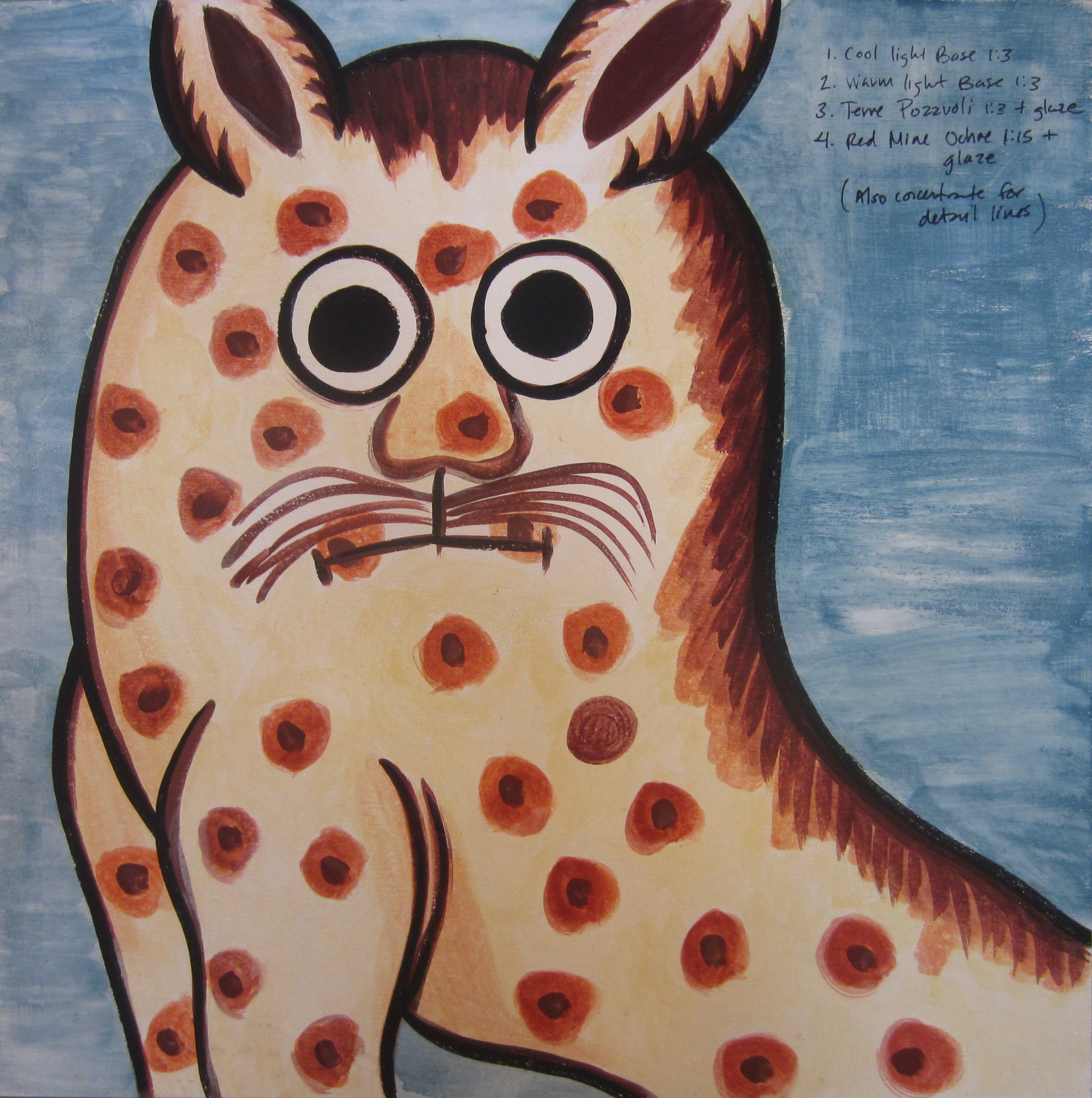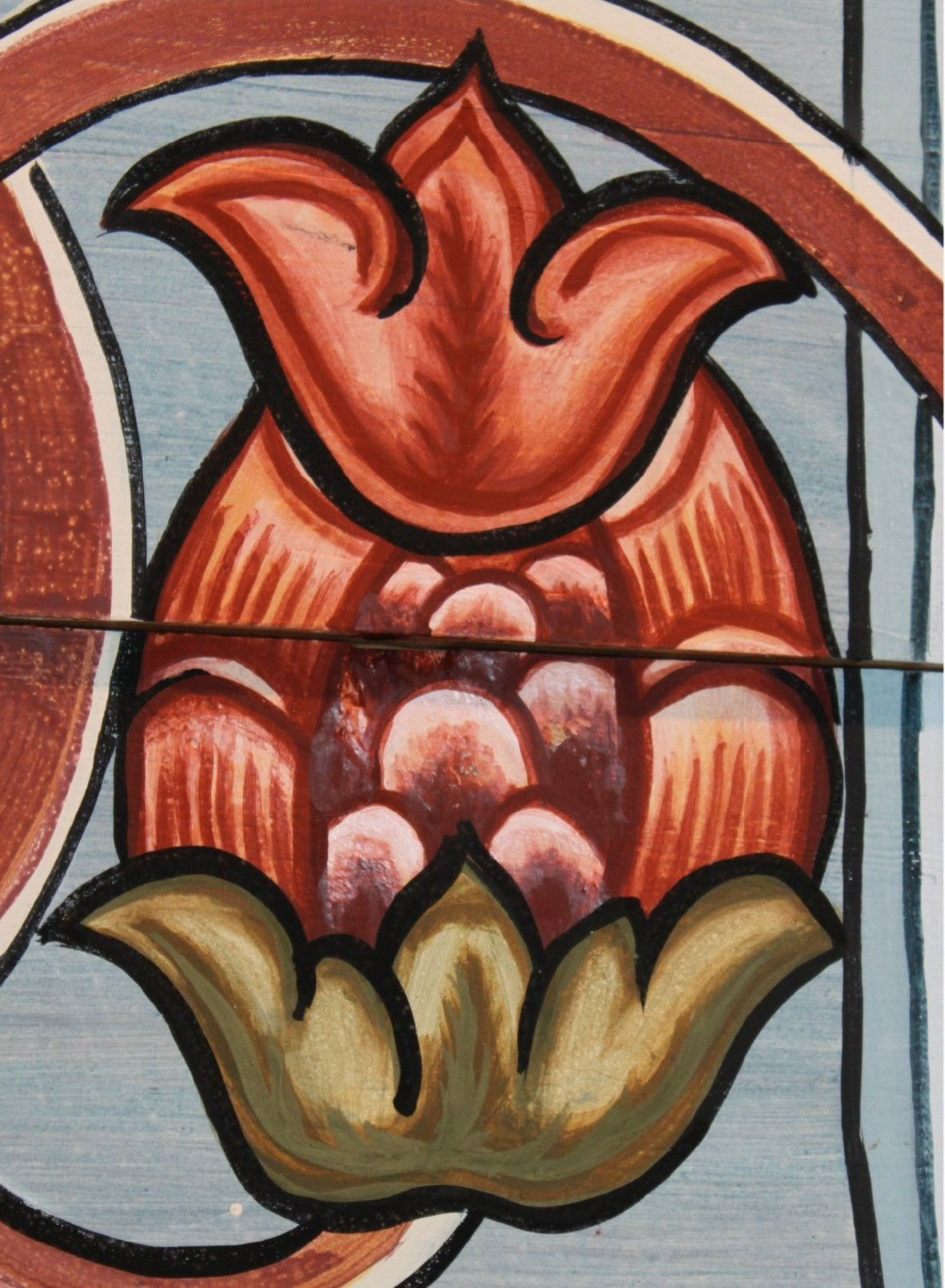The Bimah
Handshouse Studio created the Gwoździec Bimah Project to research, through hands-on educational workshops aimed at building, as accurately as possible, a full-size reconstruction of the Gwozdziec Synagogue's bimah. The finished reconstruction was painted and gifted for installation as part of the Gwoździec synagogue reconstruction, now a permanent installation at the POLIN MUSEUM for the History of Polish Jews in Warsaw, Poland

The original Gwozdziec Synagogue bimah was one of the oldest surviving documented bimahs in Europe until its destruction in 1918. The structure was carved and assembled between c. 1710 to 1725 in a regional style that combines late Baroque and Eastern European vernacular motifs. The bimah was brightly painted and located in the center of the painted prayer hall. It had an eight sided shape with open canopy that reflected the shape of the funneling and undulating tent-like structure of the interior ceiling of the synagogue. The bimah was a majestic raised platform flanked by two staircases and surrounded by elaborately paneled and spindled railings. Above the railings are mounted eight turned and carved columns that support an Italian Baroque style open canopy crowned by a bold four foot lantern with a spire reaching 16.5 feet. The eight sides are ten feet tall and are topped with eight ornately carved panels depicting lions, deer and floral patterns. The bimah is a elegant example of the synthesis of Polish wooden cultural heritage and Jewish liturgical art.
Video of the 2006 Gwoździec Synagogue Bimah workshop at Handshouse Studio. Workshop participants endeavor to make a full-scale reconstruction of the Gwozdziec Bimah based on archival photographs and drawings. Film courtesy of Trillium Studios
Like the original, the Gwoździec Synagogue bimah reconstruction is hand-made using traditional materials and processes of carving, turning, and joinery. University of Wisconsin Professor Thomas C. Hubka, author of Resplendent Synagogue, Professor Rick Brown from Massachusetts College of Art and architect Nat Crosby, worked with thirty volunteers of artist, crafts people, faculty and students to design the bimah referencing an extensive collection of architectural drawings and photographic documentation that survived in several Polish archives. Utilizing this documentation, the team reconstruction the bimah used panel carving, chip carving, carving in the round, wood turning, furniture joinery, steam bending, stenciling and finally painting. In 2009 the completed but unpainted Bimah reconstruction was exhibited at Oberlin College with the ½ scale replica of the Gwozdziec Ceiling painting and the Zabludow model and door reconstruction, all parts of the larger MAKING/HISTORY Wooden Synagogue Project.
In 2013, Handshouse Studio donated the Gwoździec Synagogue bimah replica to the Core Exhibition of the Museum of the History of Polish Jews in Warsaw Poland. Then Handshouse and the Association of the Jewish Historical Institute organized a workshop to recreate the painted surfaces that covered the original bimah to install in the core exhibition. Referencing archival resources, students and volunteers worked with a team of artists to paint the full-scale bimah using the traditional painting techniques. The completed Gwoździec Bimah now stands under the ornately decorated ceiling of the Gwoździec synagogue reconstruction recreated by students, volunteers and experts through Handshouse Studio Gwoździec Re!construction workshops in 2011 and 2012.








Time-lapse video of Gwoździec Bimah Project participants assembling the bimah, at Handshouse Studio in Norwell, MA. Unpainted, the bimah is shown here ready to be shipped to the POLIN Museum to be painted and installed in the CORE exhibition. Courtesy of Trillium Studios







